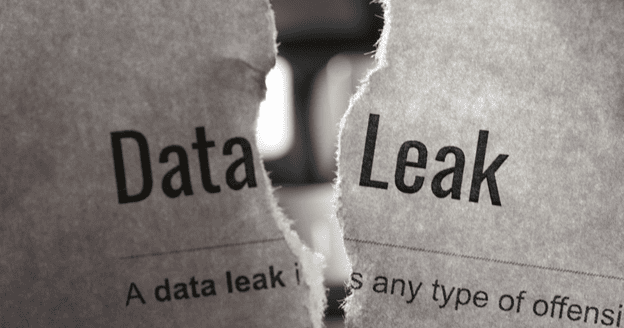Companies rapidly embrace remote work and distributed teams to boost their adaptability and competitiveness in today’s fast-paced business environment. But this transition also introduces new hurdles, especially when protecting confidential information and systems. To tackle these issues effectively, businesses need to adopt a holistic strategy called Zero Trust.
This article guides you in managing a dispersed team securely by implementing zero-trust remote access solutions and robust remote access tools. Adhering to these recommendations allows businesses to enable remote work and strengthen their protection against possible cyber threats.
Understanding Zero Trust and remote access
Guided by the principle of “never trust, always verify,” Zero Trust Network Access (ZTNA) shifts from granting network access based on location to factors such as user identity, device health, and contextual information.
Zero Trust remote access solutions are the conduit enabling employees to connect with company resources beyond the corporate network and present opportunities and risks. While fostering flexibility in a distributed workforce, it demands secure implementation. Organisations must establish robust controls to safeguard sensitive information in the current landscape.
The synergy of Zero Trust remote access solutions and secure protocols fortifies security measures while facilitating productivity across locations. Adopting a ZTNA approach mitigates internal threats by restricting user access until proper authentication and verification occur.
Meanwhile, secure remote access protocols ensure encrypted connections, minimising interception risks. Regular policy reviews on remote access authentication methods and encryption standards are imperative to address emerging threats proactively.
Core Principles of Zero Trust Architecture for Remote Teams
Embarking on the journey of implementing a ZTNA architecture for remote teams demands a strategic adherence to fundamental principles ensuring the security of your distributed workforce.
Firstly, meticulous identity verification becomes paramount. Individuals seeking remote access to company resources must undergo accurate authentication through multi-factor authentication methods such as passwords, biometrics, and smart cards.
Secondly, access control is imperative. Once an individual’s identity is confirmed, access should be granted solely to the specific resources requisite for their job responsibilities. Implementing granular access controls is instrumental in conferring necessary permissions while minimising exposure to a sensitive data center.
Lastly, the bedrock principle of continuous monitoring is indispensable in zero-trust architecture. Constant vigilance of the entire network over user activity allows organisations to swiftly detect aberrations or deviations from standard patterns, signaling potential security threats.
By steadfastly adhering to these core principles, businesses can establish a remote work system that optimises productivity and fortifies layers of security essential in the contemporary digital landscape:

Step-by-step guide to implementing Zero Trust in your organisation
Begin by evaluating your current security infrastructure to identify vulnerabilities and gaps that require attention. This assessment is pivotal in gauging your organisation’s alignment with Zero Trust principles.
- Develop a comprehensive zero-trust strategy outlining objectives, scope, and a timeline for implementing security service edge.
- Clearly define roles and responsibilities for key stakeholders involved.
- Identify and classify critical assets and sensitive data within your organisation.
- Prioritise based on importance, sensitivity, and necessary access levels.
- Enforce stringent user authentication protocols, incorporating multi-factor authentication (MFA) for remote users’ network or private apps access.
- Mandate the use of strong, regularly updated passwords to enhance security.
- Implement granular access controls, adhering to the principle of least privilege.
- Regularly review and revoke unnecessary user privileges to minimise potential risks.
- Deploy network segmentation to isolate segments based on data sensitivity. This practice limits lateral movement in case of a breach, preventing unauthorised access to critical resources.
- Establish real-time monitoring capabilities using tools that detect anomalies or suspicious activities promptly. This ensures swift response to potential threats within the network environment.
Balancing security and usability in a Zero Trust environment
Effectively managing a distributed workforce in a Zero Trust, remote access environment demands a delicate equilibrium between security and usability. While prioritising a robust security posture, it’s equally pivotal not to impede productivity.
The implementation of multi-factor authentication (MFA) emerges as a formidable solution. Necessitating diverse forms of identification, passwords, and biometric data significantly curtail the risk of unauthorised access.
Routine updates of software and systems play a crucial role in promptly addressing vulnerabilities and ensuring optimal security without causing disruptions to user experience.
Clear guidelines for password management prove instrumental in promoting robust yet memorable password creation, thereby diminishing the risk of security breaches.
Striking this equilibrium between stringent security measures and user-friendly considerations allows organisations to cultivate a secure environment for their distributed workforce, fostering efficient collaboration and productivity.
Common challenges and solutions in Zero Trust adoption
One significant hurdle in adopting the Zero Trust remote access solutions approach is employees’ prevailing need for more awareness. The complex nature of Zero Trust and its implications for secure remote access often elude a comprehensive understanding.
Additionally, resistance to change poses another obstacle, particularly from employees comfortable with existing security practices. Overcoming skepticism and pushback requires a strategic shift in mindset.
Legacy systems further complicate matters, making it challenging for organisations to implement zero-trust principles seamlessly. Compatibility issues, outdated software, and limited resources hinder the adoption process.
Addressing these challenges demands a focused approach:
Employee education and training programs: Organisations should implement comprehensive training programs to enlighten employees about Zero Trust, its benefits, and its crucial role in ensuring secure remote access.
Change management strategies: Effectively managing resistance requires clear communication about the rationale behind Zero Trust adoption, addressing employee concerns openly, and providing support throughout the transition.
Gradual implementation plan: A gradual implementation plan allows for the incremental adoption of Zero Trust to accommodate organisations with legacy systems. This minimises disruptions and integrates new technologies smoothly into existing processes:

Case studies: successful Zero Trust deployment in distributed workforces
Addressing the worldwide issues brought about by the Covid-19 pandemic, Company Cimpress, a leading international tech corporation, promptly shifted its staff to work from home. The firm proactively embraced a zero-trust framework, which required rigorous verification processes for all workers before accessing any resources or applications. By establishing robust verification protocols and closely monitoring user activity, the Company Cimpress effectively limited access to only those authorised, reducing potential security risks. In the same vein,
Company Careem, a transportation business with employees across numerous countries, acknowledged the vital necessity of secure remote access. They adopted a zero-trust strategy and implemented multi-factor authentication (MFA) on all employee devices. This approach was further reinforced by stringent access controls and ongoing risk evaluations, ensuring customer data remained secure even in work-from-home situations.
Key takeaways from these initiatives underscore the effectiveness of a zero-trust architecture in securing distributed workforces. The pivotal role of solid authentication measures, exemplified by MFA, contributes significantly to the success of such deployments. Moreover, continuous monitoring of user behavior and periodic risk assessments emerge as imperative strategies for upholding network security in the evolving landscape of remote work.
The evolution of Zero Trust and remote work security
In today’s global workforce, remote work is pervasive, demanding robust security measures to protect data amid diverse access points. A pivotal framework gaining recognition is Zero Trust, departing from traditional models by advocating “never trust, always verify,” as discussed earlier. This mandates continuous authentication for users, devices, or applications accessing corporate resources.
Originating in 2010, Zero Trust’s practical importance surged with COVID-19-induced remote work. As organisations combat evolving cyber threats, adopting Zero Trust becomes imperative for secure internal network access. Transitioning involves multi-factor authentication, micro-segmentation for lateral movement constraints, and continuous monitoring tools. Adhering to these practices fortifies remote capabilities, safeguards sensitive data, and enhances defenses against breaches.
Featured image and additional images supplied





















